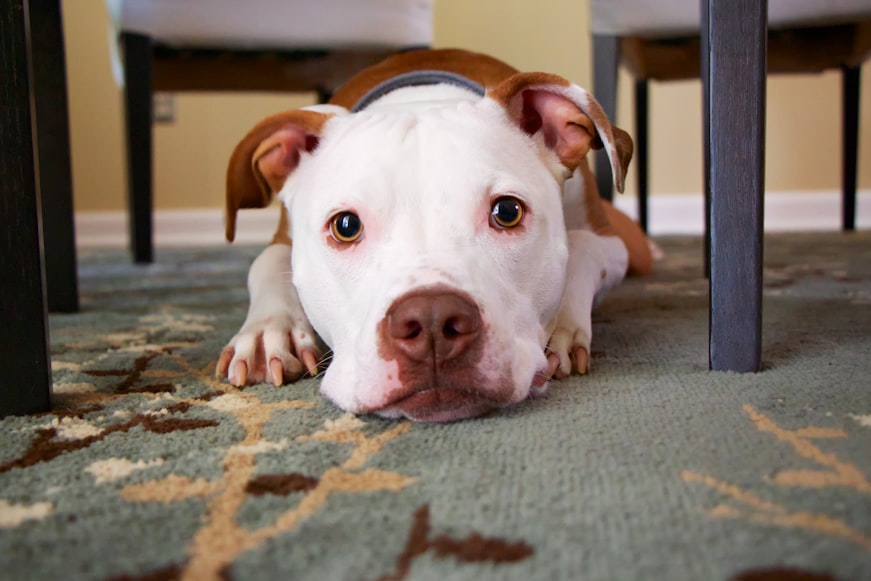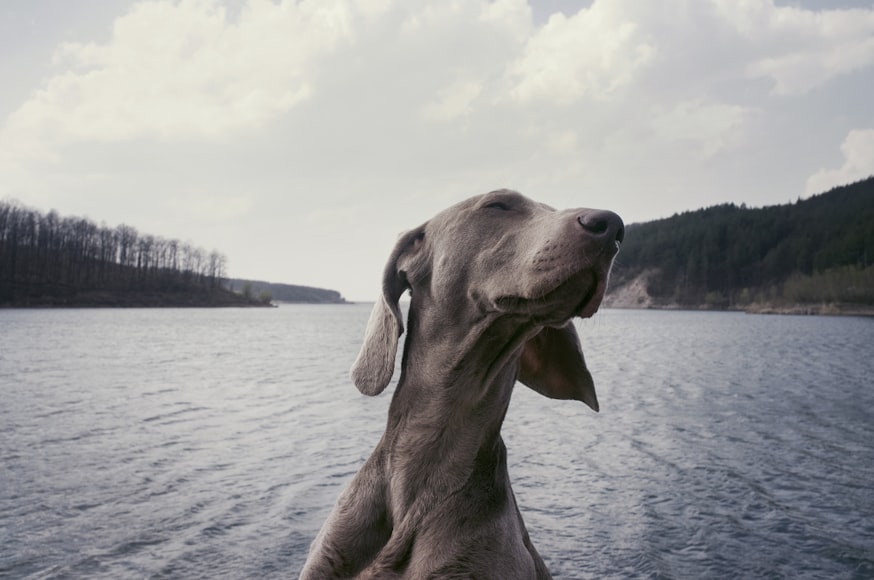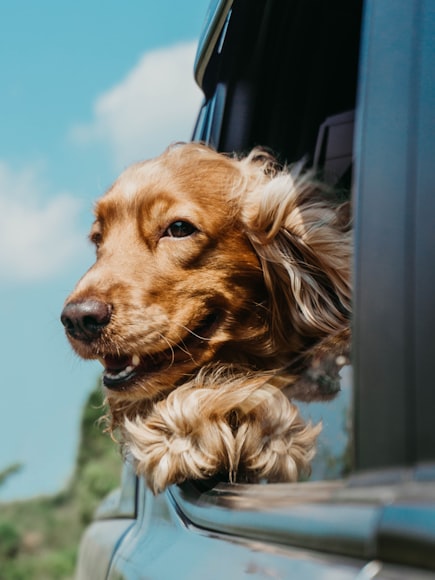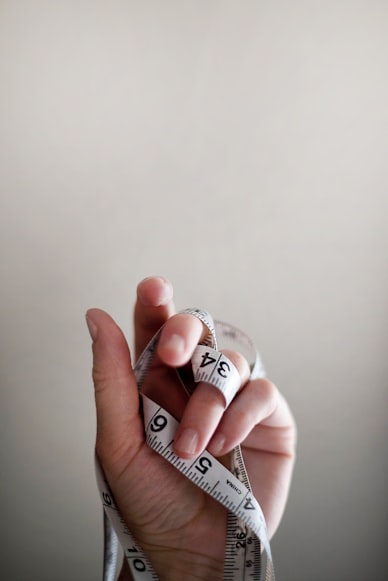Socialization Outline for Puppies with Other Dogs

Introduction:
- Explain the importance of socialization for puppies, including its benefits for behavior, mental health, and overall well-being.
- Emphasize the crucial window for socialization, typically between 3 and 16 weeks of age.
Step 1: Controlled Introductions
- Start by allowing puppies to meet other dogs in a controlled environment, such as a fenced yard or a quiet park.
- Keep leashes on both dogs and supervise closely.
- Allow them to sniff and explore each other from a distance.
- Reward calm and friendly behavior with treats or praise.
Step 2: Supervised Play Sessions
- Once puppies are comfortable with controlled introductions, organize supervised play sessions with known friendly dogs.
- Allow them to interact freely while watching for any signs of aggression or discomfort.
- Intervene if necessary to separate them and redirect their attention.
Step 3: Group Classes
- Enroll your puppy in obedience or puppy socialization classes.
- These classes provide a structured environment for puppies to interact with other dogs of different breeds, ages, and personalities.
- A qualified instructor can supervise and guide the interactions.
Step 4: Dog Parks (With Caution)
- If your puppy is well-socialized, you may consider taking them to a dog park.
- Choose a park that is well-maintained and has a fenced area for small dogs.
- Supervise your puppy closely and pay attention to their body language.
Step 5: Exposure to Different Environments
- In addition to meeting other dogs, expose your puppy to a variety of environments, such as busy streets, parks, and dog-friendly businesses.
- This will help them become accustomed to different sights, smells, and sounds.
Tips:
- Reward your puppy for positive interactions with other dogs.
- Avoid punishing or scolding for negative behaviors. Instead, redirect their attention.
- If you notice any aggressive or fearful behavior, consult with a veterinarian or certified dog trainer.
- Patience and consistency are key.
- Socialization is an ongoing process that should continue throughout your puppy’s life.
Conclusion:
By following these steps and tips, you can help your puppy become a well-socialized and well-adjusted dog who enjoys interacting with other dogs. Remember that socialization is an essential part of raising a happy and healthy pet.
Puppy Readiness:

As a puppy owner, embarking on the journey of socializing your furry companion with other dogs is crucial for their well-being and socialization skills. To ensure a successful and safe experience, it’s essential to assess their readiness before introducing them to other canines.
1. Age:
- The ideal age for puppies to start socializing with other dogs is between 8-16 weeks of age. During this critical socialization period, they are more receptive to novel experiences and can form positive associations with other dogs.
2. Temperament:
- Observe your puppy’s temperament and make sure they are comfortable and confident around strangers. If they seem fearful or aggressive, it’s best to consult with a veterinarian or professional trainer before socializing them.
3. Vaccination Status:
- Ensure that your puppy is up-to-date on vaccinations before introducing them to other dogs. This helps prevent the spread of contagious diseases and protects their health.
4. Initial Introductions:
- Begin introductions gradually in a controlled environment, such as a park or backyard. Keep the interactions short and supervised, allowing plenty of time for the puppies to sniff and get comfortable with each other.
5. Respect Boundaries:
- Teach your puppy to respect the boundaries of other dogs. If they become overwhelmed or uncomfortable, let them retreat and give them space. Avoid forcing interactions or putting them in stressful situations.
6. Supervise and Reinforce:
- Always supervise interactions between puppies and reinforce positive behaviors with treats or praise. Reward them for being calm, friendly, and respectful towards other dogs.
7. Positive Experiences:
- Create positive and enjoyable experiences for your puppy when they interact with other dogs. Engage in fun activities together, such as playing fetch or going for walks, to foster a sense of camaraderie and joy.
8. Monitor and Adjust:
- As your puppy continues to socialize, pay attention to their behavior and adjust the frequency and intensity of interactions as needed. If they show signs of stress or anxiety, reduce the exposure and consult with a professional if necessary.
By following these guidelines, you can ensure that your puppy’s socialization experience with other dogs is positive, safe, and enriching. Remember to prioritize their readiness and create a supportive and nurturing environment for their growth and well-being.
Choosing Suitable Playmates:

Socialization is a crucial aspect of a puppy’s development, as it helps them learn to interact appropriately with other dogs and people. Socializing with other dogs in particular can enhance their confidence, communication skills, and overall well-being. Here’s a guide to help you socialize your puppy successfully:
Choosing Suitable Playmates:
- Age: Opt for puppies within the same age range. Younger puppies may be too timid or playful for older ones.
- Size: Choose playmates that are of a similar size to your puppy. This will minimize any risk of injury during play.
- Energy Levels: Match the play style of your puppy with that of potential playmates. High-energy puppies may need more active companions, while calmer puppies may prefer more relaxed playmates.
Finding Socialization Opportunities:
- Puppy Kindergarten: Enroll your puppy in puppy kindergarten classes designed to provide supervised play and socialization opportunities with other puppies.
- Dog Parks: Visit designated dog parks where your puppy can interact with a variety of dogs under controlled supervision.
- Playdates: Arrange playdates with puppies you know and trust. Monitor their interactions closely to ensure they are positive.
- Dog Walks: Take your puppy on walks in areas frequented by other dogs. Encourage polite greetings and interactions, but be cautious of overly aggressive or fearful dogs.
Supervision and Management:
- Always supervise: Never leave your puppy unsupervised during socialization sessions. This allows you to intervene if interactions become inappropriate or dangerous.
- Use a leash: Keep your puppy on a leash initially, especially in public areas, until they have developed good recall skills.
- Respect other dogs: Be mindful of other dogs’ body language and give them space if they appear uncomfortable or stressed.
- Intervene if necessary: If conflicts arise between puppies, separate them calmly and immediately.
Tips for Positive Socialization:
- Start early: Begin socializing your puppy as soon as they are fully vaccinated, typically around 8-12 weeks of age.
- Keep sessions short: Start with brief socialization sessions of 15-20 minutes to avoid overwhelming your puppy.
- Positive reinforcement: Reward your puppy for calm and appropriate interactions with other dogs.
- Avoid overwhelming situations: Gradually expose your puppy to different types of dogs and environments to build confidence and tolerance.
- Be patient and consistent: Socialization takes time and patience. Continue to provide opportunities for your puppy to interact with other dogs in a safe and positive manner.
By following these guidelines, you can help your puppy develop into a well-socialized and confident canine companion. Remember to always prioritize your puppy’s safety and well-being during socialization sessions.
Safety Precautions:

Introduction:
Socializing puppies with other dogs is crucial for their development and well-being. It helps them develop social skills, reduce fear and aggression, and build confidence. Here’s a comprehensive guide to safely and effectively socialize your puppy with other dogs.
Benefits of Socialization:
- Improved social skills
- Reduced fear and aggression
- Increased confidence
- Better dog-to-dog interactions
- Prevention of behavior problems
Safety Precautions:
- Supervise all interactions: Always keep an eye on your puppy when introducing them to new dogs.
- Intervene if necessary: If any signs of aggression or fear occur, immediately separate the dogs.
- Choose safe locations: Start socialization in neutral areas, such as parks or dog parks, where there is plenty of space.
- Start small: Introduce your puppy to one or two friendly dogs at a time.
- Respect other dogs’ boundaries: Teach your puppy to approach other dogs slowly and respectfully, and to give them space if they don’t want to interact.
Steps to Socialization:
1. Start Early:
Begin socialization during the puppy’s socialization period (2-4 months). This is the time when they are most receptive to new experiences and adaptable to different environments.
2. Gradual Introduction:
- Introduce your puppy to a friendly dog in a controlled setting.
- Allow them to sniff each other and briefly interact.
- If everything goes well, gradually increase the length and frequency of interactions.
3. Control the Environment:
- Choose a neutral location where both dogs are comfortable.
- Keep the leash loose but under control to prevent conflicts.
- If either dog becomes uncomfortable or aggressive, immediately separate them.
4. Positive Reinforcement:
- Reward both dogs for calm and appropriate behavior.
- Use treats, praise, or petting to reinforce desired interactions.
- Avoid punishing your puppy for negative behavior, as this can increase fear and aggression.
5. Time and Patience:
- Socialization takes time and patience. Don’t expect your puppy to become perfectly socialized overnight.
- Continue practicing in different environments and with different dogs to reinforce their social skills.
Signs of Successful Socialization:
- Your puppy approaches other dogs calmly and respectfully.
- They engage in playful or friendly interactions.
- They display appropriate body language, such as wagging their tail or rolling over.
- They are comfortable around different breeds, sizes, and temperaments of dogs.
Conclusion:
Socializing your puppy with other dogs is essential for their overall development. By following these steps and safety precautions, you can safely and effectively help your puppy learn how to interact with other dogs in a positive and healthy way. With patience and consistency, you will create a confident and well-adjusted dog who enjoys the company of other canine companions.
Controlled Environments:

Socializing puppies with other dogs is crucial for their development and overall well-being. By providing them with opportunities to interact with other canines in a controlled and positive environment, you can help them build confidence, learn appropriate social cues, and prevent future aggression or anxiety issues.
Controlled Environments:
Start socialization in neutral areas, such as parks or quiet outdoor spaces. Avoid busy or crowded environments initially, as this can be overwhelming for young puppies. Gradually increase the level of stimulation as your puppy becomes more comfortable.
Supervised Interactions:
Always supervise your puppy’s interactions with other dogs. Choose calm, well-socialized dogs as initial socialization partners. Observe their body language and intervene immediately if any signs of aggression or discomfort are present.
Positive Reinforcement:
Reward your puppy with treats, praise, or play when they interact with other dogs in a positive manner. This will reinforce their good behavior and make them associate other dogs with something enjoyable.
Short Sessions:
Keep socialization sessions short, especially in the beginning. Start with a few minutes and gradually increase the duration as your puppy becomes more confident. Long sessions can lead to overstimulation or fatigue.
Variety of Dogs:
Expose your puppy to a variety of breeds, sizes, and temperaments. This will help them generalize their socialization skills and not become fearful or aggressive towards specific types of dogs.
Body Language:
Teach your puppy basic canine body language cues, such as the play bow and the calming signals. This will help them better communicate with other dogs and avoid misunderstandings.
Respect Boundaries:
Emphasize to your puppy the importance of respecting other dogs’ boundaries. Teach them to approach calmly and give the other dog space if necessary.
Playtime:
Encourage supervised playtime with other puppies. Play helps puppies develop social skills, learn bite inhibition, and build relationships.
Patience and Consistency:
Socializing puppies takes time and consistency. Don’t get discouraged if your puppy initially shows some hesitation or fear. With patience and positive reinforcement, you can help them overcome their fears and become well-adjusted canines.
Remember that every puppy is different, so tailor your socialization approach to their individual needs and temperament. By providing your puppy with controlled and positive interactions with other dogs, you can set them on the path to becoming happy and well-socialized companions.
Gradual Introduction:
As a pet blogger specializing in dog training, I often receive inquiries about the best way to socialize puppies with other dogs. Proper socialization is crucial for a puppy’s well-being and future interactions with other animals. Here’s a comprehensive guide to help you socialize your puppy safely and effectively.
Gradual Introduction
The key to successful socialization is taking things slowly and allowing puppies to approach each other on their own terms. Avoid overwhelming your puppy with too many dogs at once or in an unfamiliar setting.
- Leash Introductions: Start by walking your puppy on a leash in a quiet area where they can observe other dogs from a distance.
- Neutral Ground: Choose a neutral location, such as a park or school yard, where both puppies feel comfortable.
- Body Language: Observe your puppy’s body language. If they don’t seem interested in approaching the other dog, respect their space.
Supervised Interactions
Once your puppy is comfortable with leash introductions, gradually increase the level of interaction.
- Controlled Playtime: Arrange short, structured play sessions in a safe and enclosed area. Keep the playtime short and end it before either puppy gets overwhelmed.
- Supervise: Always supervise interactions between puppies, especially if they are unfamiliar with each other.
- Separate if Needed: If any signs of aggression or discomfort arise, separate the puppies immediately.
Socialization Classes
Puppy socialization classes offer a structured environment for puppies to interact with a variety of other dogs and learn appropriate social cues.
- Balanced Environment: Classes typically have a mix of puppies of different breeds, ages, and temperaments, providing a well-rounded socialization experience.
- Professional Guidance: Certified trainers supervise the interactions and provide guidance to ensure a positive experience for all puppies.
- Controlled Setting: Classes are held in a controlled setting where puppies can safely explore and learn from the pack.
Precautions
- Vaccinations: Ensure your puppy is fully vaccinated before socializing with other dogs.
- Health Checks: Have your puppy examined by a veterinarian to rule out any health conditions that may affect socialization.
- Age-Appropriate: Start socialization as soon as possible after your puppy’s vaccinations are complete, but keep in mind that younger puppies may not be ready for extensive interactions.
Conclusion
Socializing puppies with other dogs takes time and patience, but it is essential for their development and overall well-being. By following these steps and seeking professional guidance when needed, you can help your puppy become a confident and socialized companion who enjoys interacting with both humans and other animals.
Positive Reinforcement:
Introduction
Socialization is crucial for puppies to develop into well-adjusted and confident dogs. Exposing them to other dogs at a young age helps them learn appropriate social behaviors, reduce fear or aggression, and build lasting friendships.
Positive Reinforcement
Positive reinforcement is a fundamental principle of dog training. It involves rewarding desired behaviors to encourage them in the future. When socializing puppies, it’s essential to reward both puppies for calm and friendly behavior.
Step-by-Step Guide
- Start Early: Begin socialization as early as 8-10 weeks of age.
- Choose the Right Environment: Pick a neutral and safe location with minimal distractions.
- Keep Sessions Short: Start with short interactions of 5-10 minutes and gradually increase the duration.
- Introduce Gradually: Start by introducing the puppies from a distance and gradually close the distance as they become comfortable.
- Supervise Closely: Observe the puppies carefully for any signs of stress or aggression.
- Reward Calm Behavior: Use treats, praise, or petting to reward the puppies when they remain calm and friendly.
- Redirect Inappropriate Behavior: If the puppies get overly excited or aggressive, gently redirect them and reward them for calming down.
- Take Breaks: If the puppies start to show signs of stress, take a break and try again later.
Tips for Successful Socialization
- Use High-Value Treats: Choose treats that both puppies find irresistible.
- Be Patient and Consistent: Socialization takes time and consistency.
- Enroll in Puppy Classes: Puppy classes provide a structured environment for socialization and interaction.
- Volunteer at a Shelter: Helping out at a local animal shelter can expose puppies to a variety of dogs in a supervised setting.
- Seek Professional Help: If you encounter significant challenges during socialization, don’t hesitate to seek the guidance of a certified professional dog trainer.
Conclusion
Socializing puppies with other dogs is essential for their well-being. By using positive reinforcement and following the steps outlined above, you can help your puppy develop into a social and confident canine companion. Remember, patience, consistency, and a positive attitude are key to successful puppy socialization.
Handling Conflict:
Handling Conflict:
Socialization with other dogs is crucial for puppies’ healthy development. However, it’s essential to know how to handle conflicts that may arise during interactions. Here are some steps to follow:
Identify the Signs:
- Growling, snarling, or snapping
- Stiff body language
- Raised hackles
- Avoidance or fear
Redirect the Puppies:
- If play becomes too aggressive or uncomfortable, gently separate the puppies using a toy or distraction.
- Engage them in a different activity to break the tension.
- Use a command like “leave it” or “come” to direct their attention elsewhere.
End the Session:
- If redirection does not work, it’s best to end the socialization session.
- Remove one or both puppies from the environment and give them time to calm down.
- Do not punish the puppies, as this may worsen the situation.
Additional Tips:
- Supervise interactions closely: Pay attention to the puppies’ body language and intervene if necessary.
- Start socialization early: Begin socializing puppies at a young age (around 8-12 weeks) to ensure they develop positive social skills.
- Choose suitable playmates: Pair puppies with similar ages, sizes, and temperaments.
- Provide a safe environment: Ensure the socialization area is free of distractions or obstacles that could trigger conflict.
- Be patient: Socialization takes time and effort. Do not get discouraged if conflicts occur.
- Seek professional help if necessary: If you are unable to resolve conflicts successfully, consult a certified dog trainer or veterinarian for guidance.
Remember, the goal of socialization is to help puppies develop positive relationships with other dogs. By handling conflicts appropriately, you can ensure a safe and enriching socialization experience for your furry friend.
Duration and Frequency:
Socialization is a crucial aspect of puppy development that helps them learn how to interact appropriately with other dogs and people. Here’s a comprehensive guide to socializing puppies with other dogs:
Importance of Socialization:
Socialization allows puppies to develop confidence, prevent fear or aggression, and improve their overall well-being. It also helps them understand canine social cues and boundaries.
When to Start Socialization:
Begin socialization early, ideally between 3 to 16 weeks of age, when puppies are most receptive to learning.
How to Socialize Puppies:
1. Puppy Playdates:
- Arrange playdates with puppies of different ages, sizes, and breeds.
- Supervise interactions and intervene if necessary to prevent overwhelming or aggressive behavior.
2. Group Classes:
- Enroll puppies in puppy kindergarten or group classes where they interact with other dogs under controlled supervision.
3. Dog Parks:
- Gradually introduce puppies to supervised dog parks where they can experience a wider range of canine encounters.
- Stay alert and remove puppies from situations that may trigger fear or aggression.
4. Casual Encounters:
- Introduce puppies to calm and friendly dogs in controlled environments, such as on leashed walks or during neighborhood meet-and-greets.
5. Dog Events:
- Attend dog shows, agility trials, or other events that offer opportunities for puppies to interact with many dogs.
Duration and Frequency:
- Gradually increase the duration and frequency of socialization sessions as puppies become more comfortable.
- Start with short sessions and gradually extend them as puppies learn to relax and enjoy interactions.
- Aim for daily or weekly socialization opportunities, especially during the early stages.
Tips for Successful Socialization:
- Choose positive and friendly dogs for interactions.
- Keep sessions short and low-stress.
- Reward puppies for calm and appropriate behavior.
- Supervise interactions at all times.
- Respect the boundaries of other dogs and puppies.
- If a puppy shows signs of discomfort or fear, end the interaction and consult with a veterinarian or certified dog trainer.
Conclusion:
Socializing puppies with other dogs is essential for their development and well-being. By following these guidelines, you can help your puppy become a confident and well-adjusted companion. Remember to seek professional guidance if any challenges arise during the socialization process.


















